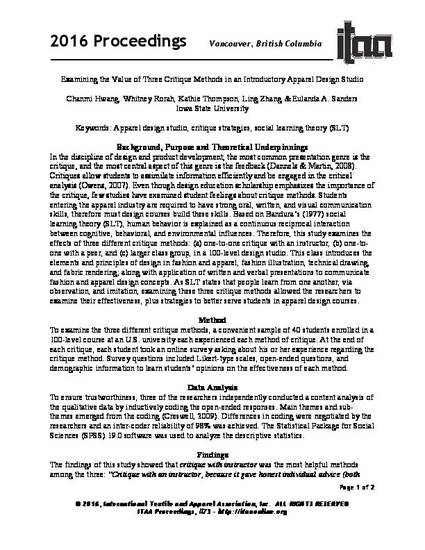
In the discipline of design and product development, the most common presentation genre is the critique, and the most central aspect of this genre is the feedback (Dannels & Martin, 2008). Critiques allow students to assimilate information efficiently and be engaged in the critical analysis (Owens, 2007). Even though design education scholarship emphasizes the importance of the critique, few studies have examined student feelings about critique methods. Students entering the apparel industry are required to have strong oral, written, and visual communication skills, therefore must design courses build these skills. Based on Bandura's (1977) social learning theory (SLT), human behavior is explained as a continuous reciprocal interaction between cognitive, behavioral, and environmental influences. Therefore, this study examines the effects of three different critique methods: (a) one-to-one critique with an instructor, (b) one-to-one with a peer, and (c) larger class group, in a 100-level design studio.
Available at: http://works.bepress.com/eulanda_sanders/56/
